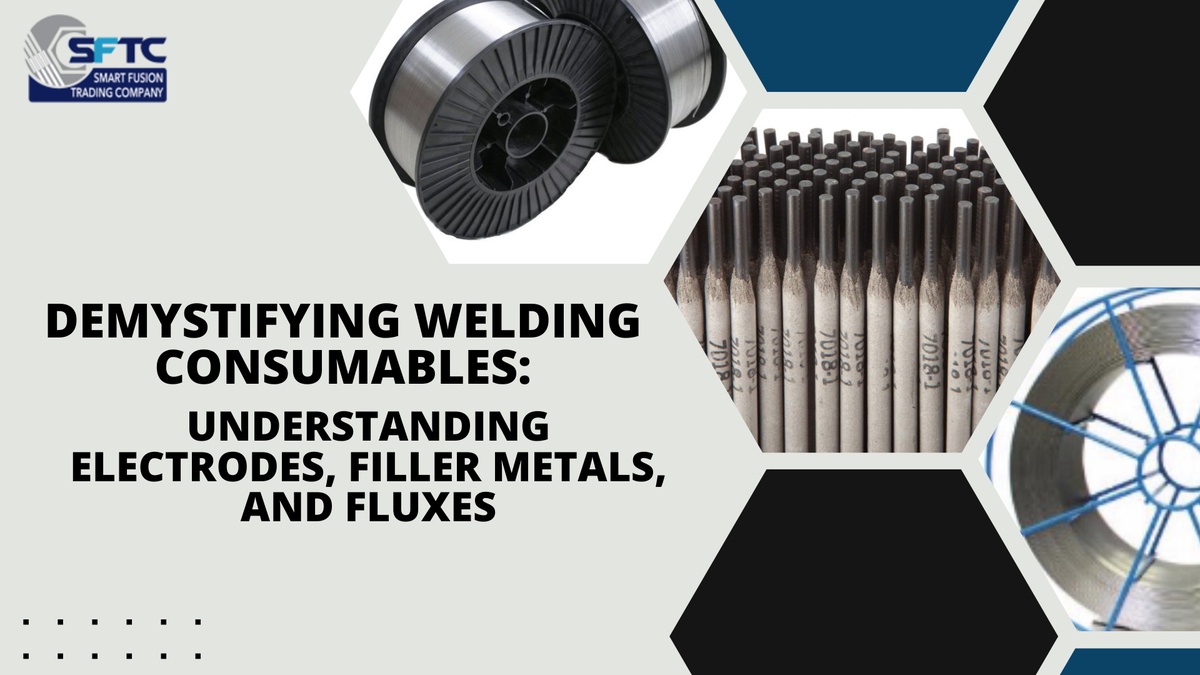Welding is a fundamental process that fabricates and repairs various metal structures. You must understand the role of welding consumables to achieve high-quality welds. Welding consumables encompass electrodes, filler metals, and fluxes, each playing a crucial role in the welding process. In this article, we will demystify these welding consumables, shedding light on their functions, types, and importance. Whether you're an industrial company or simply curious about welding, this comprehensive guide will enhance your knowledge and help you make informed decisions when it comes to welding consumables.
Understanding Electrodes
Electrodes serve as the conductive component that initiates and maintains the electric arc required for welding. There are two main types of electrodes:
- Consumable
- Non-consumable
Consumable electrodes are designed to melt and form part of the weld pool, while non-consumable electrodes remain intact throughout the welding process.
Within consumable electrodes, there are further classifications based on their coating composition. For instance, shielded metal arc welding (SMAW) electrodes are coated with flux materials, which provide shielding gases and protective slag to enhance weld quality. Metal-cored electrodes offer high deposition rates and increased productivity, while flux-cored electrodes are versatile and suitable for outdoor applications.
Filler Metals: The Perfect Match
Filler metals are used in welding to join two base metals together. They provide the necessary material to bridge the gap between the two parts being welded. The selection of the appropriate filler metal is crucial for achieving desired weld properties such as strength, corrosion resistance, and ductility.
Various factors influence the choice of filler metal, including the base metal composition, welding process, and intended application. Common filler metal types include solid wires, tubular wires, and covered electrodes. Solid wires are used in gas metal arc welding (GMAW) and provide a clean and stable arc. Tubular wires, often used in flux-cored arc welding (FCAW), offer increased deposition rates and higher welding speeds. Covered electrodes, as mentioned earlier, are used in SMAW and provide versatility, portability, and excellent performance in outdoor conditions.
The Importance of Fluxes
Fluxes play a vital role in welding by providing protection to the molten weld pool and the weld metal from atmospheric contamination. They also improve the overall welding performance by facilitating arc stability, reducing spatter, and enhancing the weld appearance.
Fluxes can be categorized into two main types: active and inert. Active fluxes contain chemicals that actively react with impurities, such as oxides and sulfur, to purify the weld. Inert fluxes, on the other hand, provide a protective barrier to prevent atmospheric gases from contaminating the weld. These fluxes are commonly used in gas tungsten arc welding (GTAW) and submerged arc welding (SAW).
Partner With The Right Supplier
In the world of welding, understanding the role and importance of welding consumables is essential for achieving high-quality and durable welds. Electrodes, filler metals, and fluxes all contribute to the success of the welding process. By comprehending the different types and their functions, you can make informed decisions when it comes to selecting the right welding consumables.
Smart Fusion Trading Company (SFTC) is the leading Weldarc Welding Suppliers and Hobart Welding Suppliers offer a wide range of welding consumables to meet the diverse needs of their customers. By partnering with knowledgeable suppliers like SFTC, you can ensure that you have access to high-quality welding consumables, enabling you to deliver superior welds and enhance your welding capabilities.


No comments yet